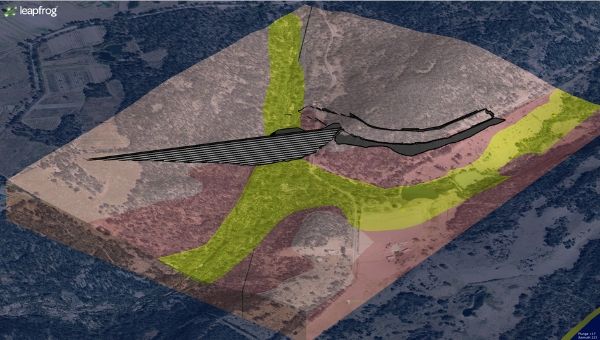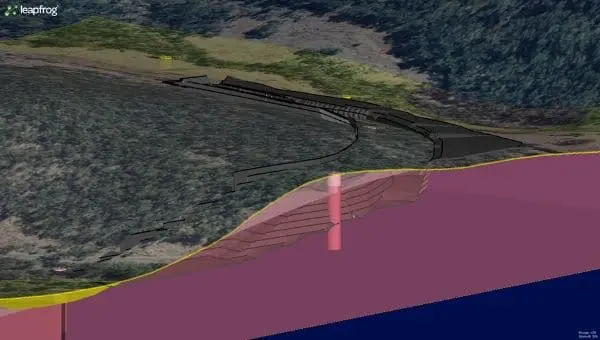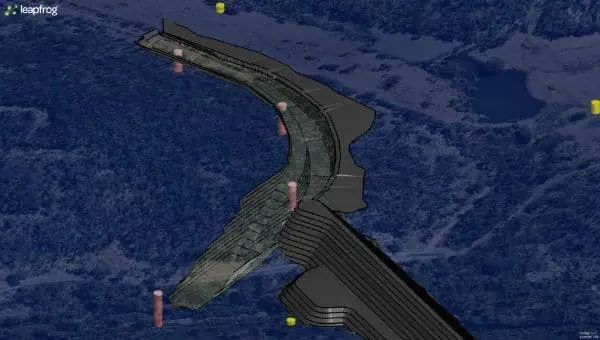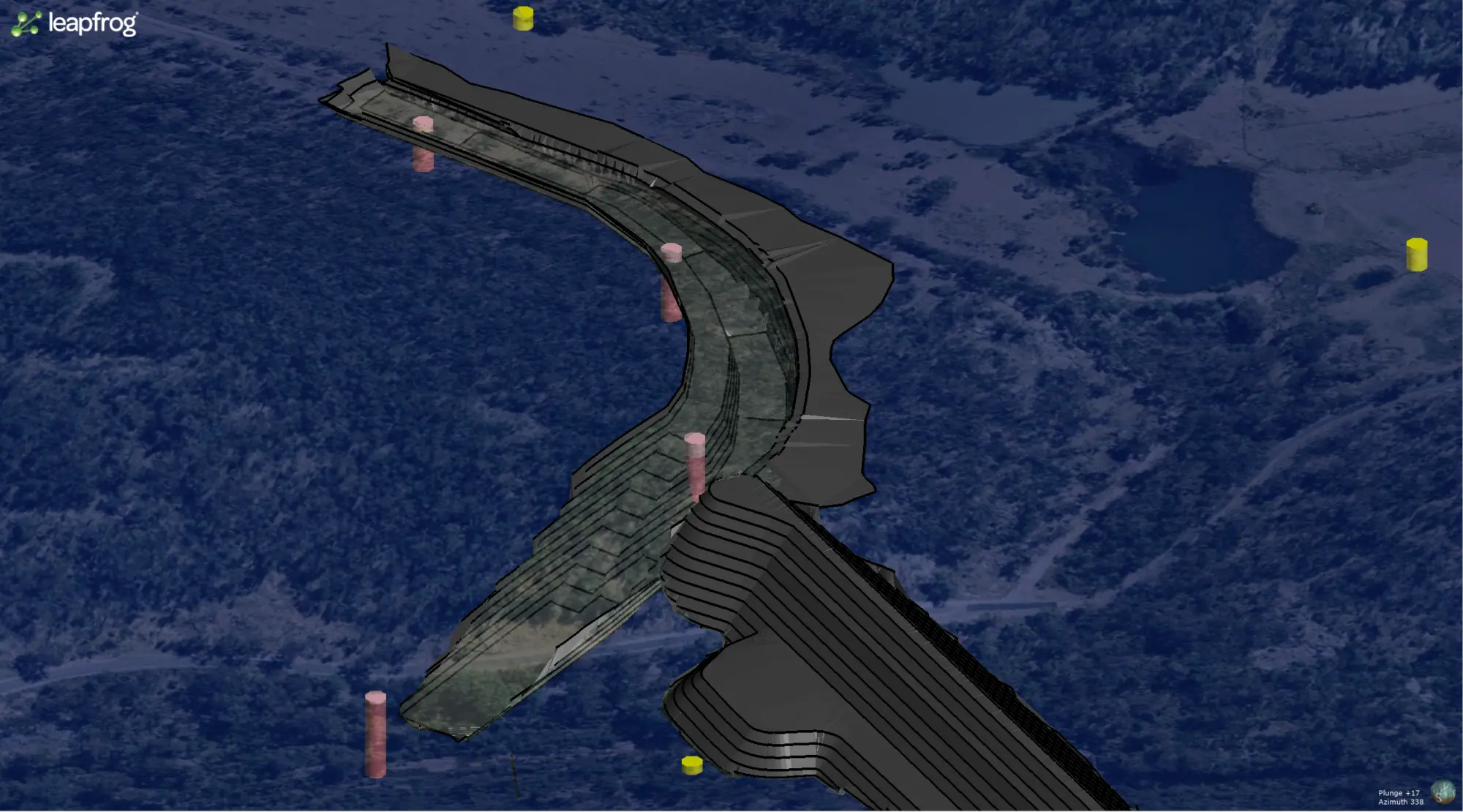The Emu Swamp Dam is a proposed 12,100 megalitre urban and irrigation supply dam on the Severn River in Stanthorpe, Queensland. This $84 million project aims to increase water security and agricultural proficiency for an area known for drought, benefiting the local economy, increasing production for Queensland fruit farmers and viticulturalists (who currently truck water in from New South Wales) and securing an estimated 700 local jobs.
Jacobs, one of the world’s leading providers in technical, professional and construction services, was contracted to complete a detailed business case, including a reference design.
One significant challenge they faced was assessing the project’s geological risks and then communicating them effectively to a wide range of stakeholders, many without technical expertise. For this they used 3D subsurface modelling tool Leapfrog Works, which has been designed specifically for the Civil and Environmental industries.

The Challenge
The risks associated with any dam project are considerable, not least due to the threat of the valley bulging and associated permeability. The Emu Swamp Dam project faced many challenges including determining an economic and safe design, securing significant water resources without affecting downstream flows, incorporating the project into State Water plans and liaising and communicating with a variety of stakeholders from local councils, chambers of commerce and government to private farmers, developers and the local community.
Graeme Jardine, APAC ME Technical Director Engineering Geology, Jacobs Australia, said they used Leapfrog Works specifically as a communication tool to demonstrate to the community and non-technical forums what they had discovered through their drilling programme.
“Leapfrog Works had a very positive impact on our understanding and communication of the geology. Using 3D visualisation gave clarity and meaning and allowed us to effectively communicate to all stakeholders. This 3D visualisation was particularly beneficial for those with no technical background.
Graeme Jardine, APAC ME Technical Director Engineering Geology, Jacobs Australia


The Investigation
By using Leapfrog Works to create a subsurface model, Jacobs were able to gain a clearer understanding of the geology and take action to mitigate the risks they faced, including:
- It prompted them to propose a grout curtain to stop seepage and piping failure.
- The subsurface model also identified weathered decomposed granite in the south-east abutment, which meant that the dam footprint could require widening and/or the use of anchors.
- It allowed Jacobs to plan for the use of spillway rock in the construction work, helping to determine that clay for the embankment dam would need to be hauled from outside the local area.
- Other environmental considerations identified included use of the rock from the spillway excavation in the construction work, and efficient management of the significant surplus
Identifying all of these sources quickly and accurately is essential as they have an impact on the overall project cost and delivery.
“Using an industry-specific tool like Leapfrog Works really helped with the successful delivery of the business case,” said Graeme Jardine.
Graeme Jardine, APAC ME Technical Director Engineering Geology, Jacobs Australia
Flying through the project
The Leapfrog Works fly-through movie function Jacobs used has a high frame rate of up to 60 frames per second and works by simply dragging 3D scenes into a storyboard inside the modelling software.
Transitions are added automatically and were easily tweaked to help the Jacobs team tell the story of the Emu Swamp Dam project.
The real benefit is that there’s no need to be a graphic designer – geologists themselves can produce a quality fly-through tour of a project without any specialist movie-making training required.
“We were able to use Leapfrog Works’ movie feature to create fly-throughs that we could easily pause during consultations to explain key aspects. These impressive visualisations really helped to bring the project to life.”
Graeme Jardine, APAC ME Technical Director Engineering Geology, Jacobs Australia
The Outcome
“Leapfrog Works was able to save us considerable time as it’s designed to meet the specific needs of the industry,”
“We don’t need to switch between software packages, we can carry out all of the modelling in one place. Works is also extremely versatile and means we can interact with Building Information Model (BIM) designs and ground investigation databases, such as gINT & Holebase, as needed. This meant that we could bring all information into Works’ highly visual environment, giving us a holistic view of the whole project, further helping reduce risk in decision making.”
Graeme Jardine, APAC ME Technical Director Engineering Geology, Jacobs Australia
The Future
A decision regarding the Emu Swamp Dam’s go-ahead is likely in 2019 and could result in more borehole drilling to fully understand ground permeability.
The Leapfrog model will help to inform this work when the project progresses to the detailed design phase. This new drilling data can be easily incorporated into the subsurface model using Works’ dynamic updating feature. New data, gained from the field, can be loaded into Leapfrog Works and will automatically flow through to the end model and rapidly update it, with associated time saving and efficiency gains.
Jacobs are now using Leapfrog Works as their preferred geological modelling tool for other significant projects in the Asia-Pacific region, and are looking to expand its application into the Americas and the UK.
